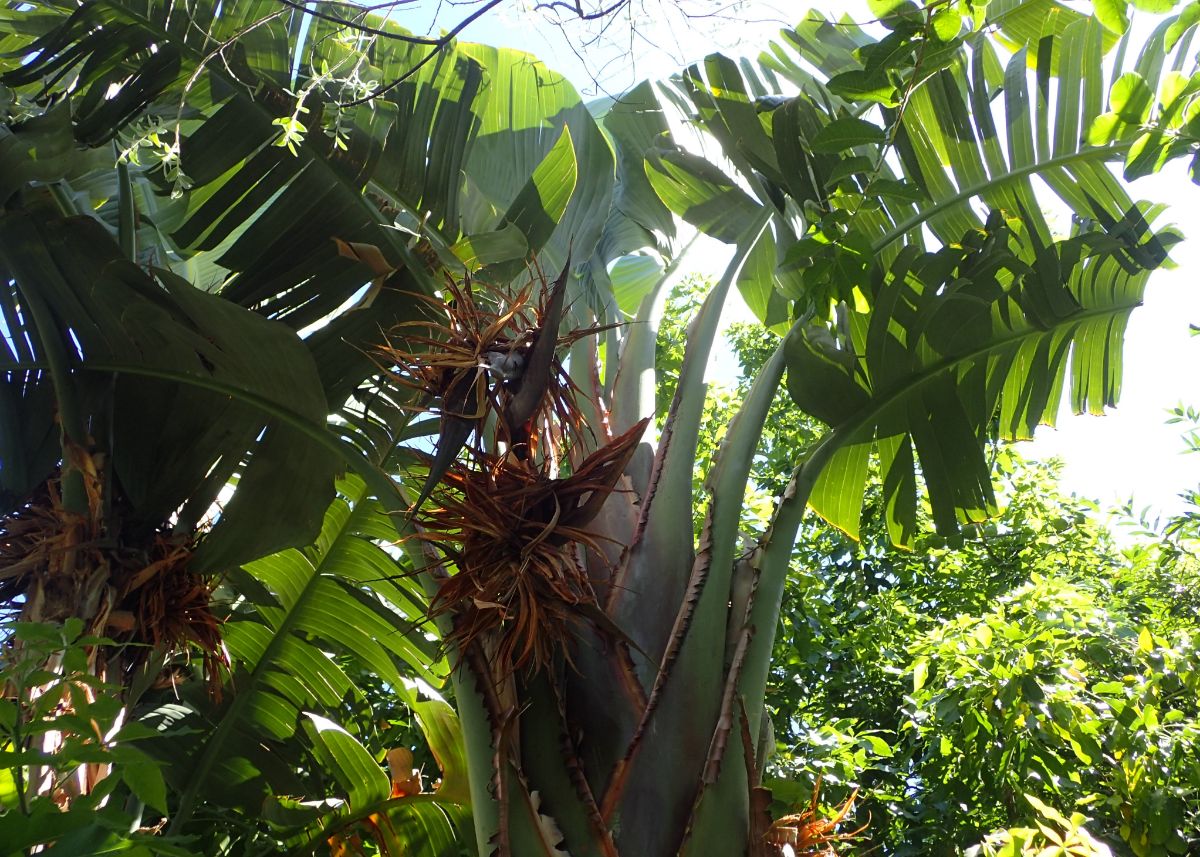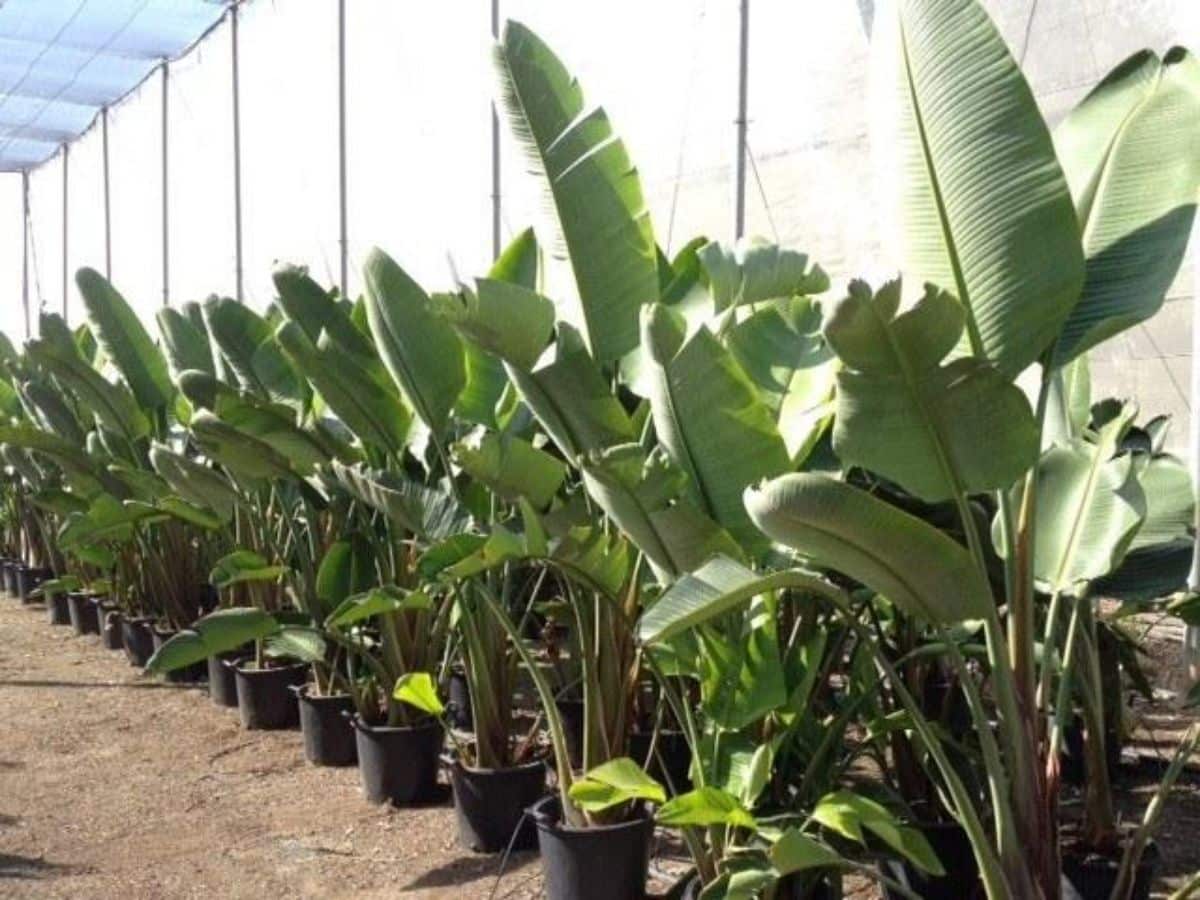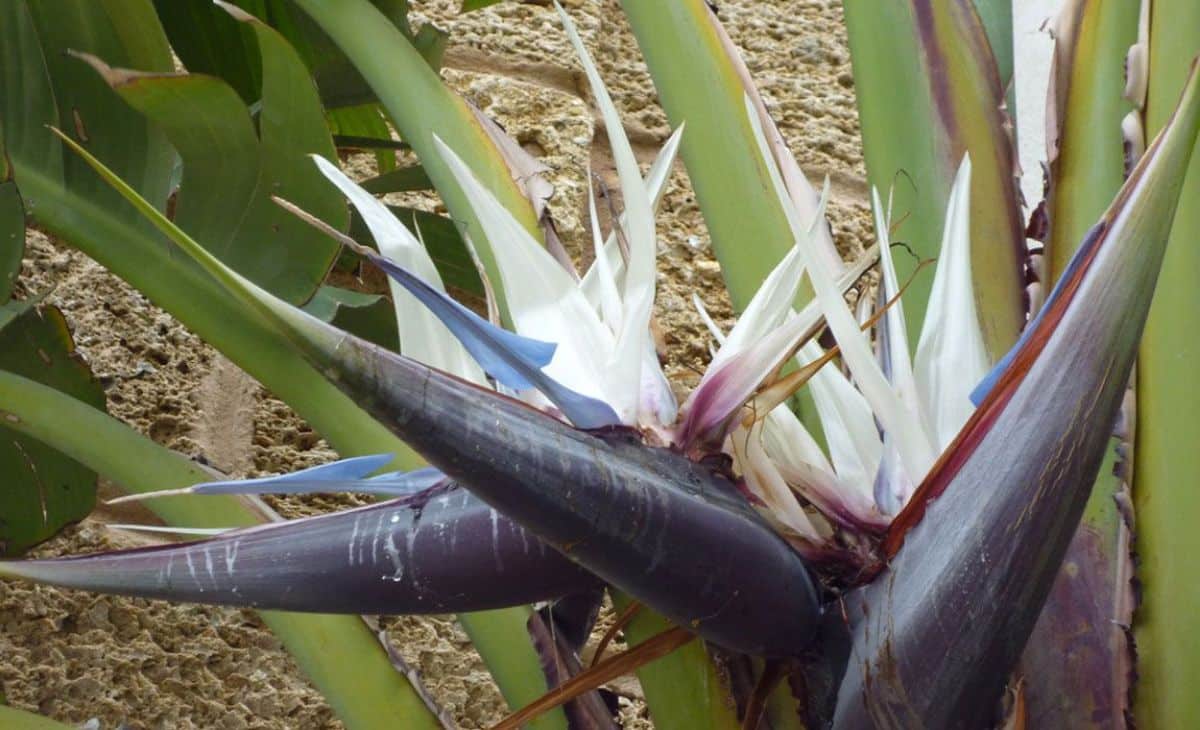
If we had to name some of the most beautiful plants of the vegetable kingdom, without a doubt the Strelitzia augusta would be in it. Also known as bird of paradise, it gives one of the most showy flowers you have ever seen. And best of all, Strelitzia augusta and its care are not difficult to manage. Do you want to know how?
If you have a 'border banana', as it is also called, and you want it to be as good as possible, then we are going to help you make it so. Go for it?
Strelitzia augusta: important care

Source: elnougarden
Strelitzia augusta is a plant native to Africa, which can give you an idea of the temperature it is capable of withstanding. In addition, in general it is very resistant and except for some details that you will have to control to avoid major problems, there is not much to give it.
The care of the Strelitzia augusta go above all to that it flourishes, since it is the flowers that draw so much attention, because of their color and the way they have that looks like a bird (hence commonly called bird of paradise).
But, what are those cares?
Location
Although they are sold as indoor plants, the truth is that Strelitzia augusta needs a lot of direct sun. That's why, the ideal place for this plant is outside, in full sun.
Now, If you live in an area where it is very, very hot and the sun burns, it is best to place it in a semi-shaded place, so that the high temperatures do not make a dent in its condition.
If you want it inside the house, then our recommendation is that you always place it near the terrace, balcony or a window where it gets a lot of sun. Keep in mind that if it does not receive adequate light, it will not develop well and the new leaves may not come to fruition or the leaves may turn black. To give you an idea, experts say that the best thing for this plant is that it receives at least 6 hours of direct sunlight.
Temperature
The ideal temperature for Strelitzia augusta is between 18 and 30 degrees. We are talking about a plant with a temperate or warm climate and, due to its origin, it is used to high temperatures.
Now, in terms of casualties, he doesn't take them as well as we would like and, although can withstand frosts of -2ºC, these must be very sporadic because if they are habitual it would put the health of the plant at risk.
For this reason, if you cannot bring it indoors in winter due to lack of light, you should protect it, especially the part with the roots.

Source: albogarden
Substrate and transplants
One of the most important parts of the care of the Strelitzia augusta is undoubtedly the substrate. you have to provide one that has very good drainage, something that, at the beginning when you buy it, you may not have it. Therefore, consider, depending on the season of the year in which you buy it, make a transplant to change the land.
Our best recommendation is that you combine universal substrate with perlite and/or coarse sand. In this way the roots can be aerated much better and we also avoid, due to the humidity, that they rot.
In general, transplants should always be done in spring, when the temperature is already more sustainable and warm. If you have it in a pot then you will have to change it every 2-3 years to one that is only about 5cm larger than the original (it does not tolerate changes to larger pots because it stops its development). What if you have it in the garden? In that case you will only have to remove a little soil and add new one so that it can be nourished.
Irrigation
There is no doubt that, among the care of the Strelitzia augusta, irrigation is a determining factor for your plant to be truly healthy. And it is the most problematic, and why many fall along the way. So we are going to focus on giving you all the keys so that this does not happen.
To start, you should know that irrigation will depend on the season of the year. In autumn and winter, watering is practically sporadic, or it is not watered at all (especially in the months of November, December and January). In spring you can start watering and you will increase the frequency until summer, when you will maintain that type of irrigation.
Obviously, the more sun it receives, the more water it will need. For some it may go well water twice a week in summer, but we already tell you that it will depend on the weather, humidity, etc. If it is in the Mediterranean area, with direct sun and temperatures that do not drop below 40ºC, then perhaps twice is too little and you have to add three.
The good thing about this plant is that does not need a lot of moisture, unlike other plants. If you want it to look pretty, we do recommend that you spray its leaves from time to time. Of course, do it at night because if the sun hits the drops of water on the leaves, it could burn them.

Source: mediflora
Fertilizer
Fertilizer is quite necessary for this plant, especially because one of the signs that it is lacking fertilizer is that, when it takes out new stems with leaves, they break in half or do not come out.
Therefore, Every two weeks, you should give it a little fertilizer. Of course, only during the months of March to September; then you have to let her rest.
Plagues and diseases
Before we have told you that Strelitzia augusta is a very resistant plant. And the truth is that it is so. It is not usually attacked by pests unless it is stressed. If that happens to you, then yes, you should be 'keen eye' in search of mealybugs.
of diseases, Perhaps the most problematic has to do with irrigation, due to root rot. Likewise, problems with electricity (especially the lack) and with the subscriber are also aspects to take into account.
Multiplication
When your Strelitzia augusta is already big and you want to have a smaller one but just like its "mother", you should know that you can get it. In fact, the plant itself will develop suckers, and you will see them grow as little shoots coming out of the plant.
Here you can do two things:
- Take the opportunity to transplant it and find the sucker and its roots to remove it as is (it is the most complicated process, especially since sometimes they do not have roots).
- Cut it directly and root it (well in water, well on land).
Both methods work quite well, although they usually take time to give results.
As you can see, the care of Strelitzia augusta is not complicated at all, and it is a plant suitable for beginners. It will be more complicated for it to bloom, but if you give it time to get used to it and meet all its needs, sooner or later it will reward you with a long-awaited flower. Do you have a Strelitzia augusta at home? How are you doing?